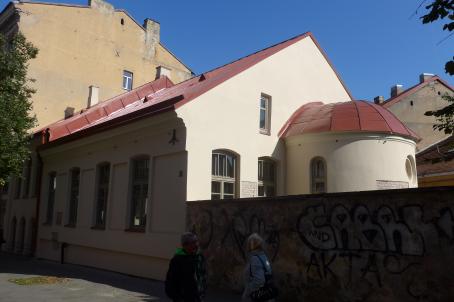Choral Synagogue

The Taharot Hakodesh Synagogue, or Choral Synagogue, is the only survivor of 105 to 110 synagogues in Vilnius. Opened in 1903, it survived the Second World War because the Nazi occupiers had a pharmacy there.

The Taharot Hakodesh Synagogue, or Choral Synagogue, is the only survivor of 105 to 110 synagogues in Vilnius. Opened in 1903, it survived the Second World War because the Nazi occupiers had a pharmacy there.

The Catholic Church of All Saints' Day was built in 1620-1631 with ancient Baroque elements inspired by the Renaissance. The building is a classified historical heritage.

Zavl's Kloyz in Vilnius is a nineteenth-century Ashkenazi synagogue, whose architect was Aleksei Polozov. This brick synagogue in historicist style is currently under reconstruction.

The Church of St. John the Baptist and St. John the Evangelist, or Church of St. Johns, is a late Baroque church. A wooden church was built on the market square as early as 1387, but it was replaced by a Gothic stone church with three naves, which was consecrated in 1427. In 1571, the church was entrusted to the Polish Jesuits by King Sigismund Augustus, who completely transformed it in the Renaissance style. A bell tower was erected at the turn of the 16th and 17th centuries, then chapels, crypts, etc. were added. After a fire in 1737, the façade was redecorated in the Jesuit style, notably by Johann Christoph Glaubitz. The interior was redesigned in 1825-1829 and the façade was completely rebuilt with columns of the neo-classical Corinthian order. The church now serves as a church for the University of Vilnius.